Art History Study Guide Antiquity Exam (copy)
1/35
Earn XP
Name | Mastery | Learn | Test | Matching | Spaced |
|---|
No study sessions yet.
36 Terms
Name: Anavysos Kouros. Period: Ancient Greece, Archaic Period, early 5th century BCE. Location: Cemetery at Anavysos, near Athens. Significance: Heroic Nudity (could show social class or religion), Archaic smile, freestanding sculpture.
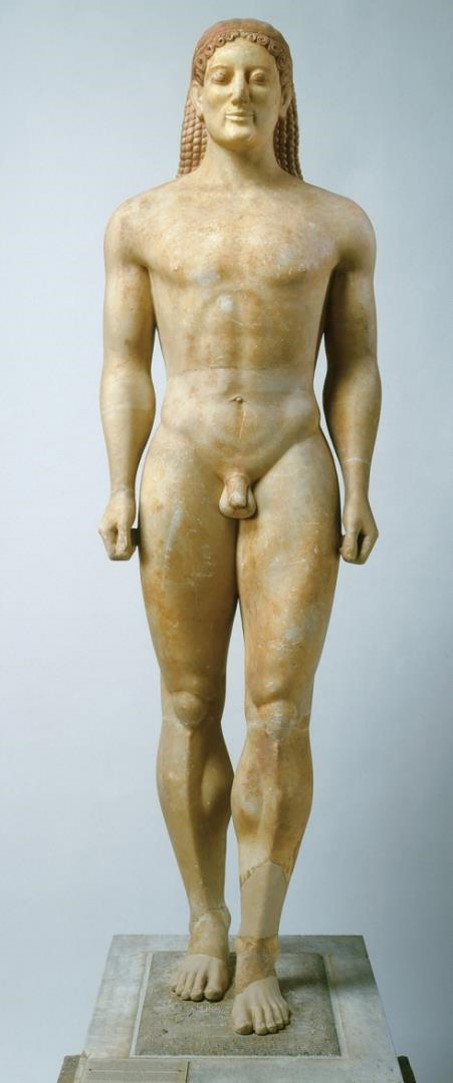
Name: "Peplos" Kore. Period: Archaic Period, early 5th century BCE. Location: Akropolis, Athens. Significance: She is wearing a "peplos", which is a type of garment. Originally painted. Freestanding sculpture. Has Archaic smile. Could be a statue of either Artemis or Athena. May have originally had animals on her "peplos".
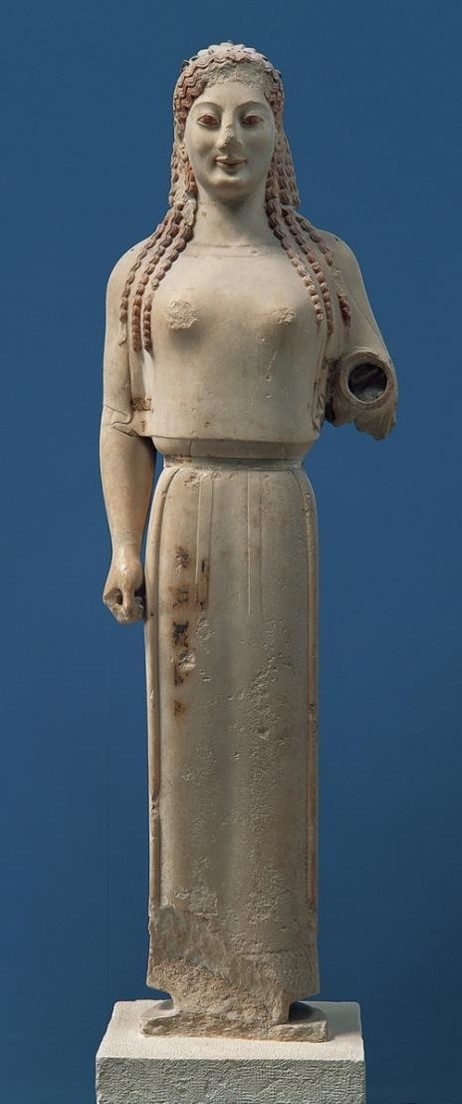
Name: "Kritos" Boy. Period: Ancient Greece, Early to High Classical, mid to late 5th century BCE. Significance: Has a slight "contrapposto" pose, which makes the statue look more realistic.
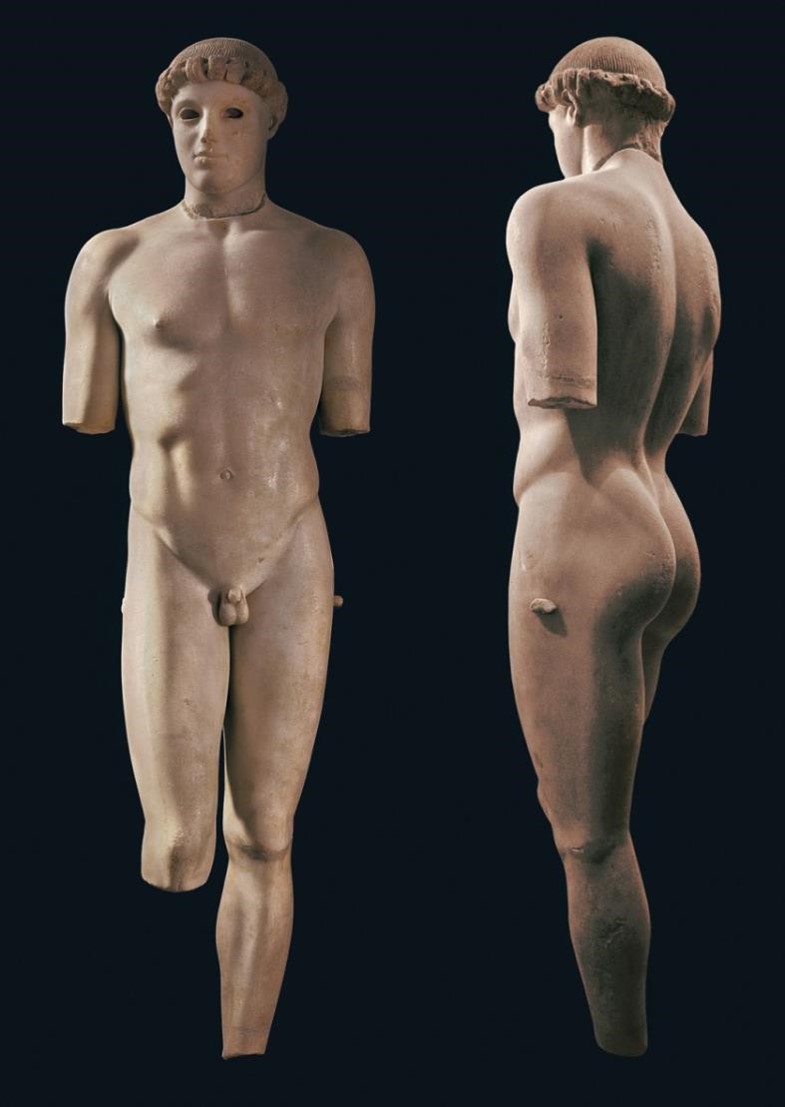
Name: Warrior, found off of Raice. Period: Ancient Greece, Early to High Classical, mid to late 5th century BCE. Location: Raice, Italy. Significance: It shows heroic nudity. It wasn't destroyed because it was in a shipwreck. Shows naturalism and anatomy. Material: Bronze.
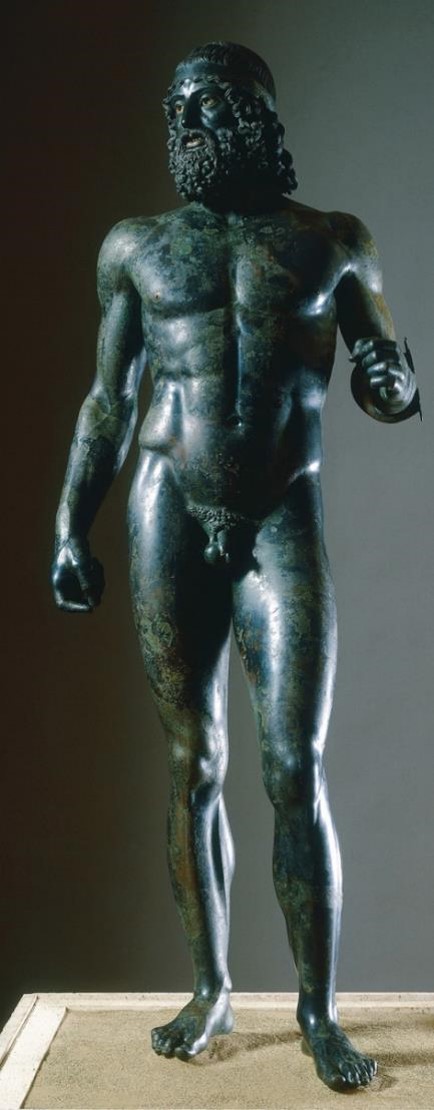
Name: Polykletios, Doryphoros ("Spear Bearer"). Period: Ancient Greece, Early to High Classical, mid to late 5th century BCE. Significance: Perhaps a statue of Archilles. It's a Roman copy after the original bronze was destroyed. On this statue is the "Canon of Polykletios", which is a manuscript. It also shows "symmetria" (aka. the relationship of parts to each other). The statue is "7 heads high". He is also in a contrapposto stance ("walking stance"). He is a freestanding statue. His arm is raised to show that he was holding a spear (more active).
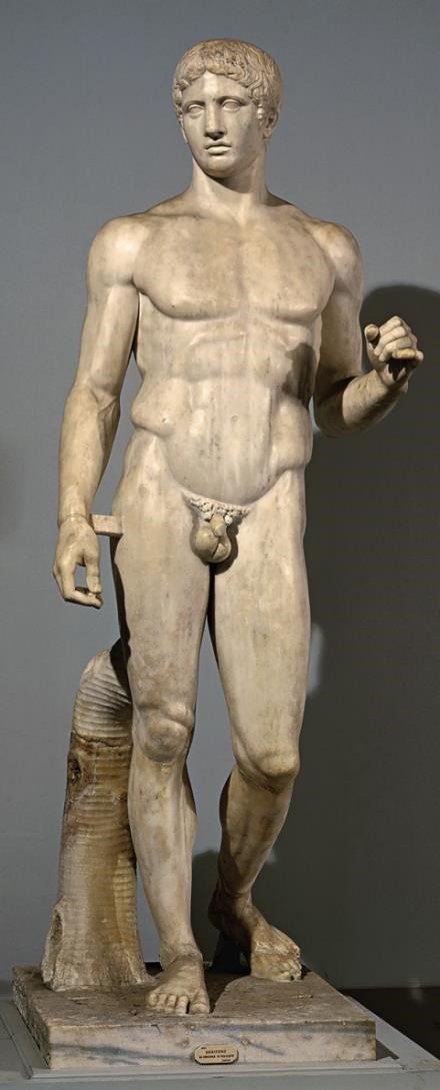
Name: Kallikrates and Iktinos, Parthenon, Athens. Period: Ancient Greece, Early to High Classica, mid to late 5th century BCE. Location: Akropolis, Athens. Significance: Made as a temple to Athena. Outside, it has a Doric Order (aka. metope, triglyph, volute, base, frieze, entasis). Inside, it has an Ionic Order (aka. capital, volute, moldings, newer and more frivolous). It is made with a 4:9 ratio. There are NO straight lines! It has a pediment and peripteral.
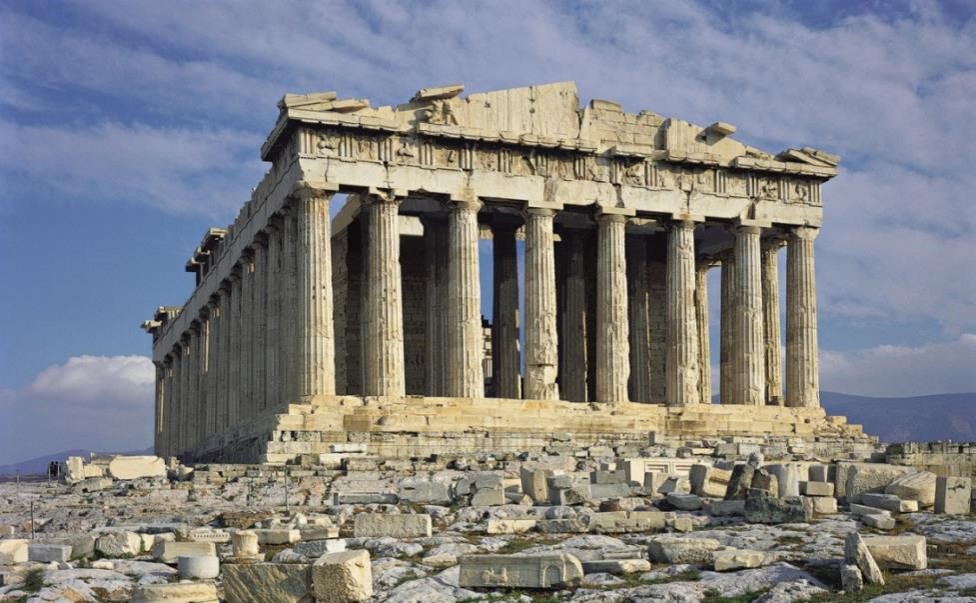
Name: East Pediment Sculptures from "The Birth of Athena", from the Parthenon. Period: Ancient Greece, Early to High Classical, mid to late 5th century BCE. Location: Akropolis, Athens. Significance: Shows the story of how Athena came out of Zeus's head, fully formed and yielding a weapon. On a naturalistic scale, it has a LOT more movement. More active in the center of the sculpture because they know about Athena's birth. Figures on the ends are less active because they don't know about the birth yet. It has a consistent scale, naturalism, variety of complex poses, and narrative action; ideal proportions, features, and anatomical structures. It also shows heroic nudity, naturalism/classical proportions. (Reason over passion). Also shows: name: "Three Goddesses on Mount Olympus". Significance: can see body through clothes -> wet drapery. Woman laying down is Aphrodite.

Name: Lapith Fighting a Centaur, metope from the Parthenon. Period: Ancient Greece, Early to High Classical, mid to late 5th century BCE. Location: Parthenon, Akropolis, Athens. Significance: Metope relief from Doric Frieze on south side of Parthenon.
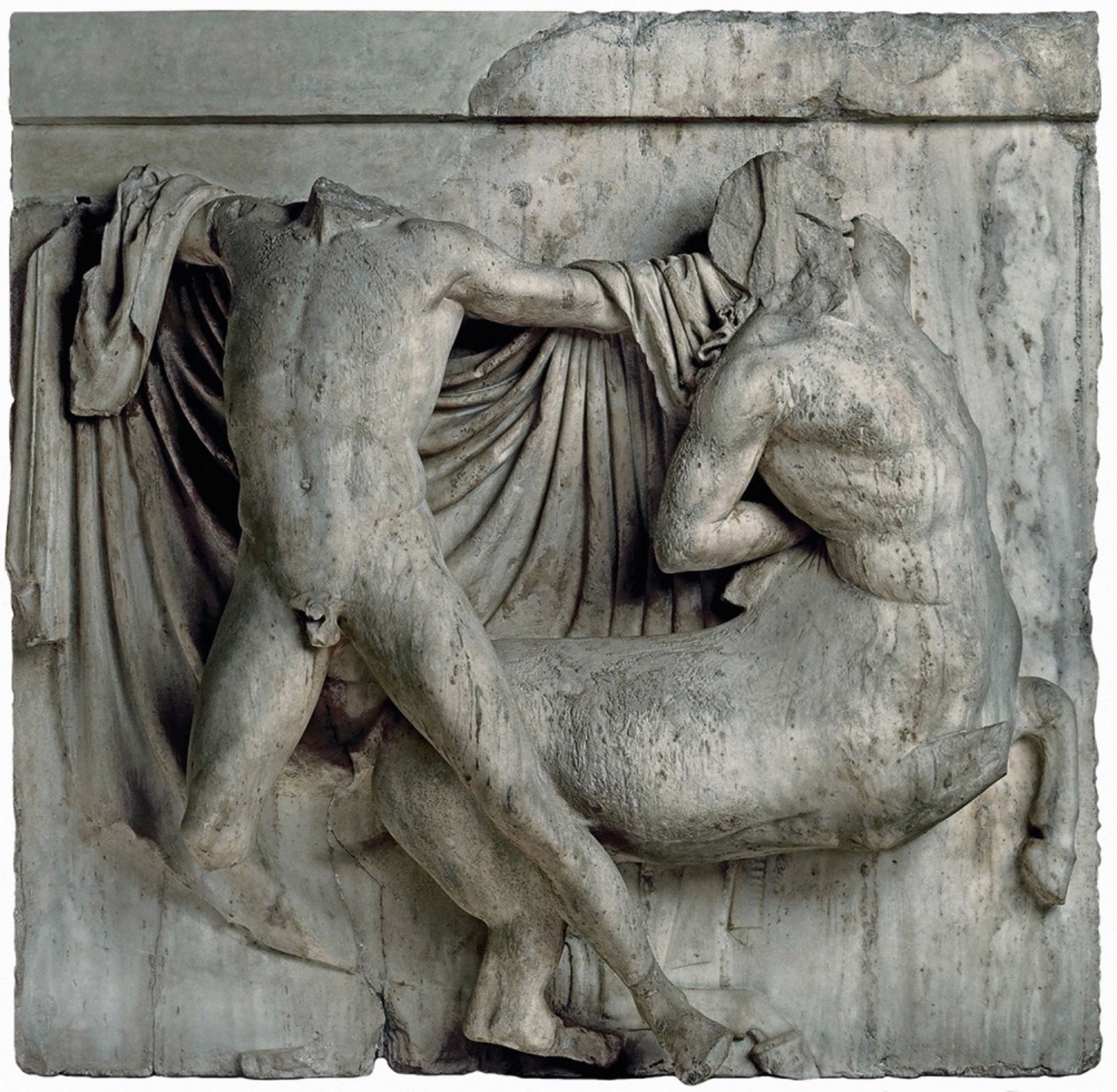
Name: Marshals and Young Women, Frieze of the Parthenon. Period: Ancient Greece, Early to High Classical, mid to late 5th century BCE. Location: East side of the Parthenon, Akropolis, Athens. Significance: shows the "Panathenaic Procession". Shows details of the procession. It is an Ionic Frieze.
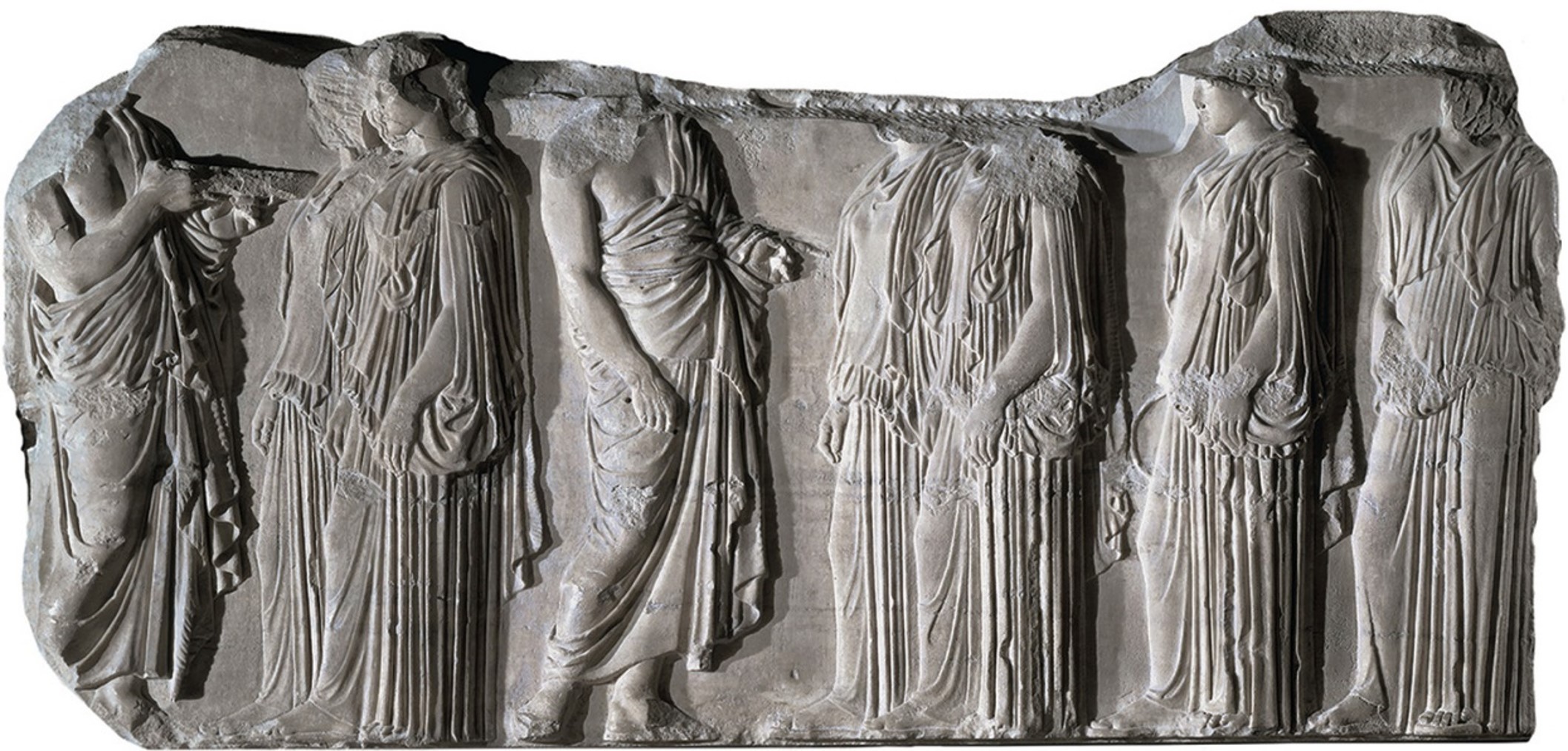
Name: Praxiteles, Hermes and the Infant Dionysos. Period: Ancient Greece, Late Classical, c. 4th century BCE. Significance: It is more detailed and active. It is "eight heads high". Canons of proportion. Less chizzled.
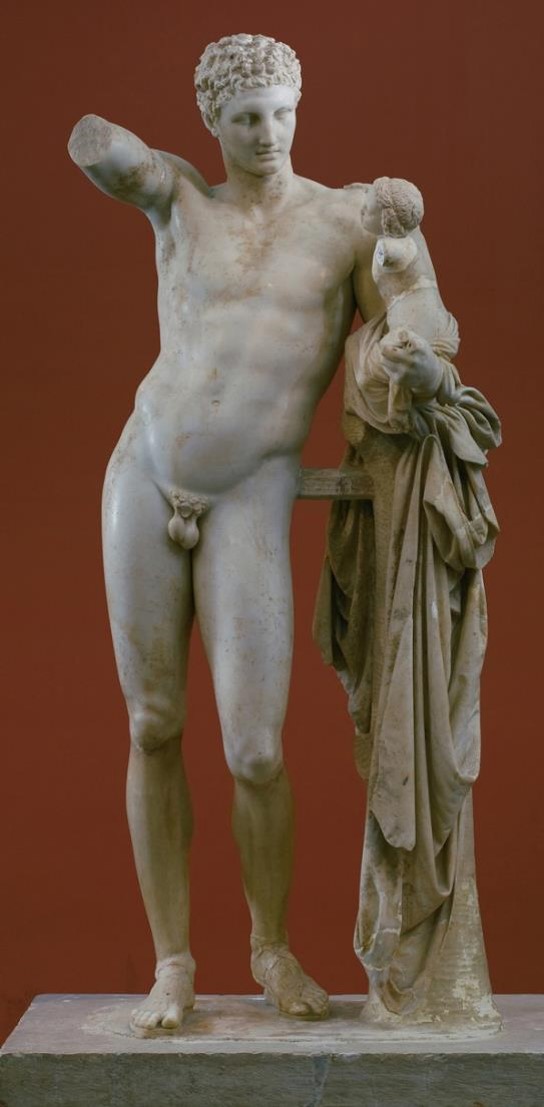
Name: Praxiteles, Aphrodite of Knidos. Period: Ancient Greece, Late Classical, c. 4th century BCE. Significance: First portrayal of female nudity. Kos vs. Knidos (aka. female nudity ok or not? its ok!) The statue shows Aphrodite getting ready to take a bath, but you caught her. Clothes have more folds now. She is using a "gesture of modesty" with her hand. Material: marble.
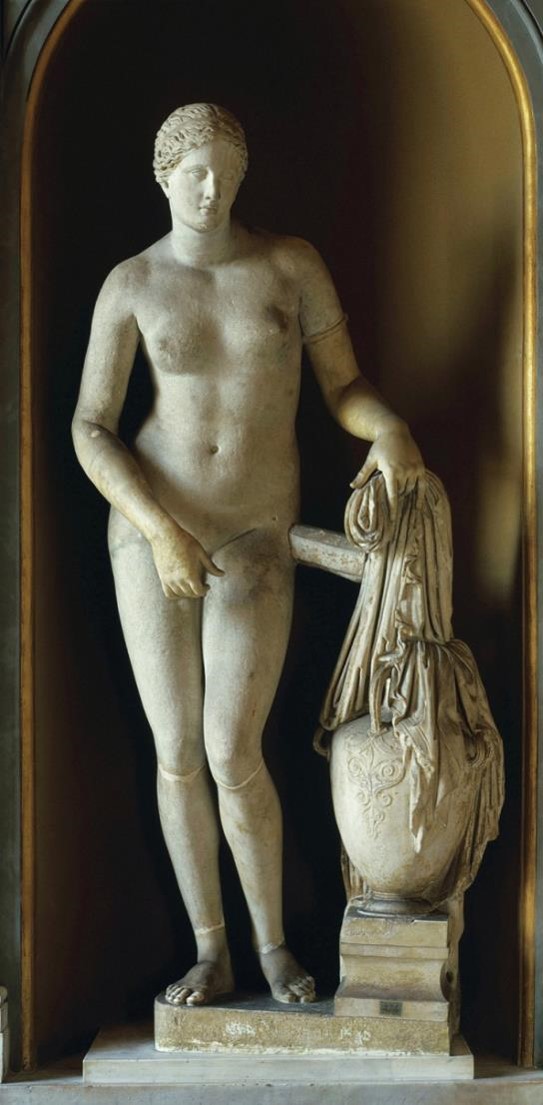
Name: Dying Gallic Trumpeter, Epignos. Period: Ancient Greece, Hellenistic, late 4th-1st century BCE. Significance: It's a monument at Pergamon. It shows the triumph of Attalos I over the Gauls (celts). It shows great action, emotion, and variety. It has "barbarian" traits (aka. Toric [his necklace]). Also, shows heroic nudity. Has expressionist quality -> admiration or pity? (probably not, just shows triumph over him.) His arm is holding him up as he dies (in pain).
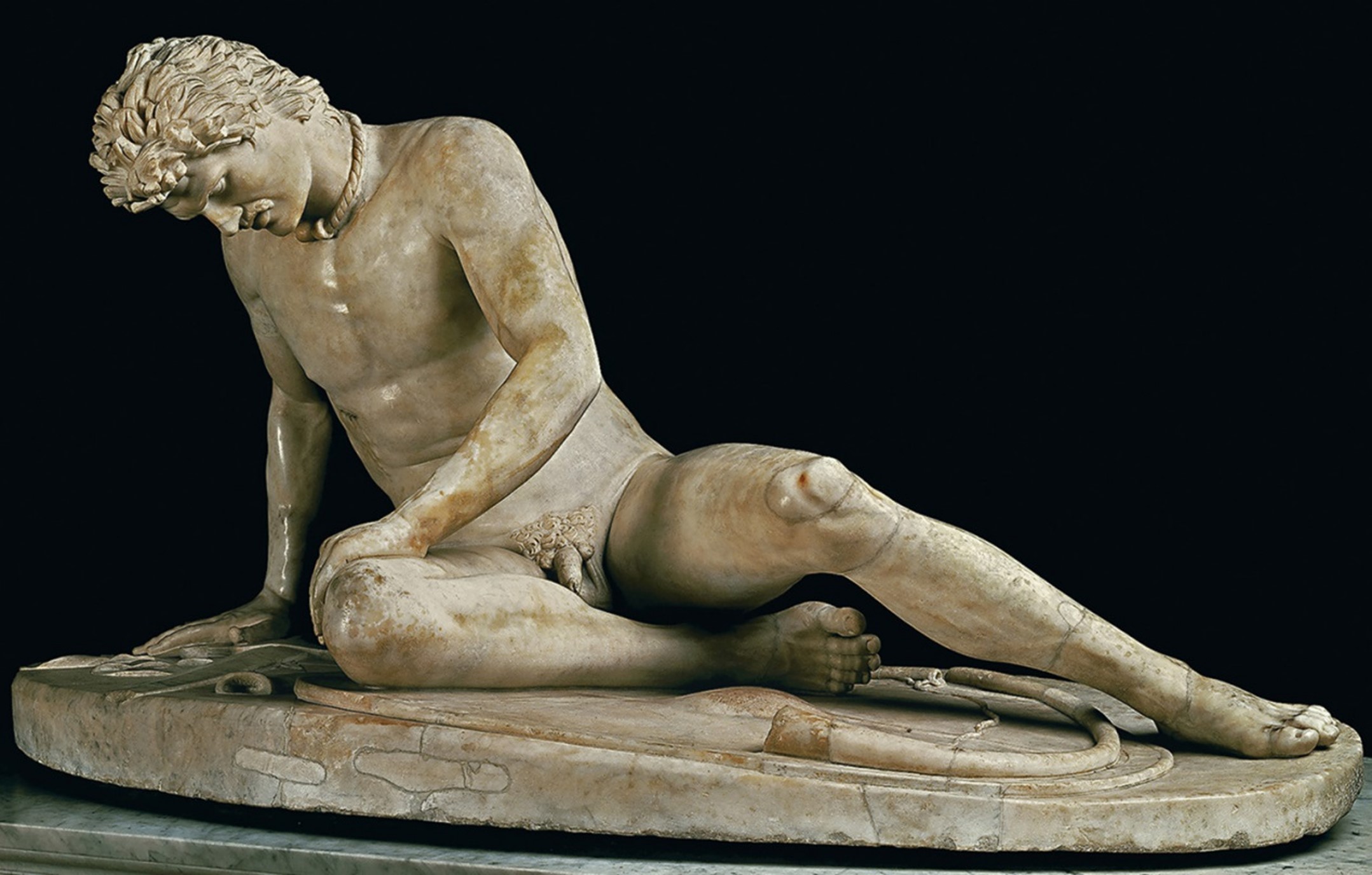
Name: Nike (Victory) of Samothrace. Period: Ancient Greece, Hellenistic, late 4th-1st century BCE. Location: Sanctuary of the Great Gods, Samothrace. Significance: A monument to a naval victory (Eudamos of Rhodes Antiochus the Great's victory). Carving is dynamic and has wet drapery style. Shows goddess landing on the bow of a ship to prove victory. Material: Bronze.
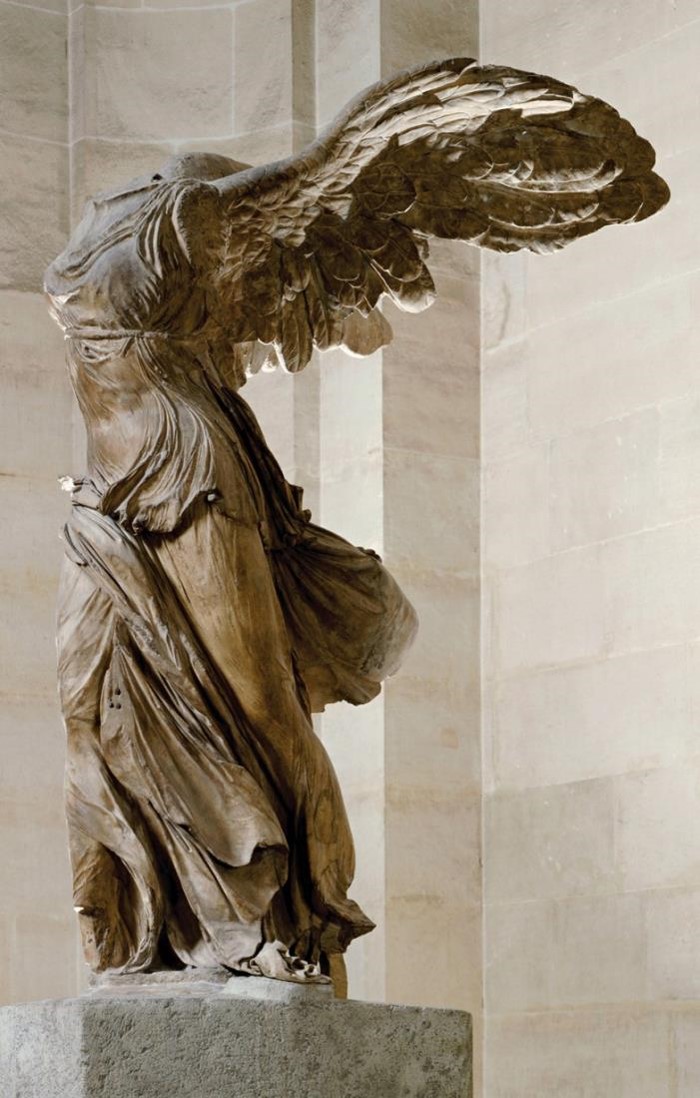
Name: Patrician Carrying Portrait Busts of Two Ancestors. Period: Ancient Republican Rome, 6th-1st century BCE. Significance: A portraiture sculpture (Barberini Togatus). Called "portraits" because statues are less idealized and look more realistic. They had less muscles, older, less hair, double chin. Showed they were knowledgeable because they are older. Verism -> real people/less idealized.
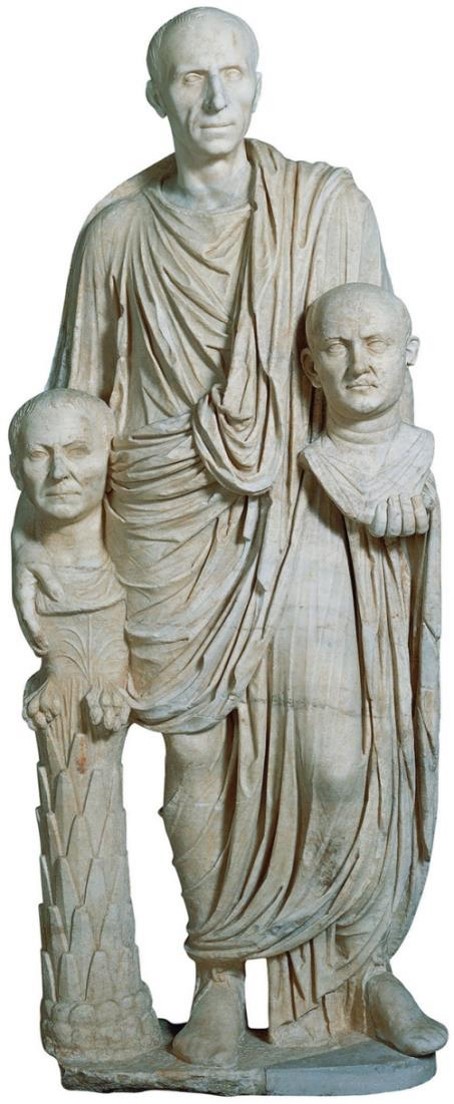
Name: Temple (dedicated to Portunus), Rome. Period: Ancient Republican Rome, 6th-1st century BCE. Location: Rome. Significance: It was a Cattle Market. It is similar to Greece, but it is a bit cheaper to build the temple. This is because it had less columns and had the interior enclosed. It also had an elevated porch. It also has straight lines (aka. columns and roof are straight).
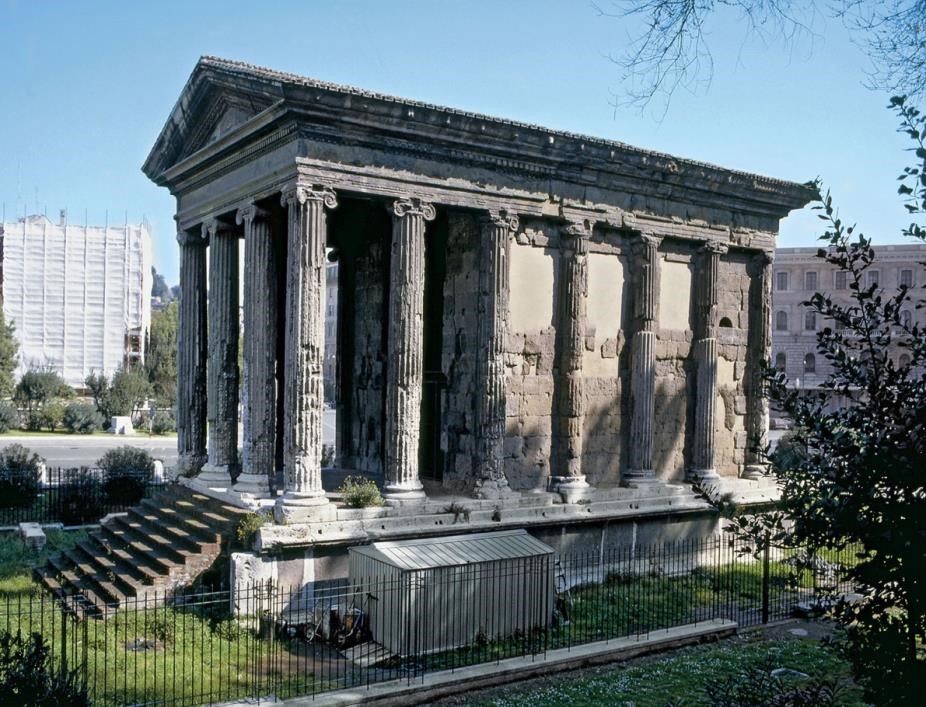
Name: Augustus of Primaporta. Period: Ancient Imperial Rome, 1st century BCE-4th century CE. Significance: Cupid near him shows his ancestry to the goddess Venus. It shows him as divine after death. He is clothed to show his power (armor). He has a contrapposto stance, but it looks like he's moving forward, not just tired of standing. Him pointing -> looks like he's a leader. On his armor, it shows the victory of Parthians. It's an idealized statue, but three locks of hair shows that it's definitely Augustus. It was originally painted. His wife, Livia, commissioned the statue. He is the grandnephew of Julius Caesar. (His real name is Octavian). Material: Bronze.
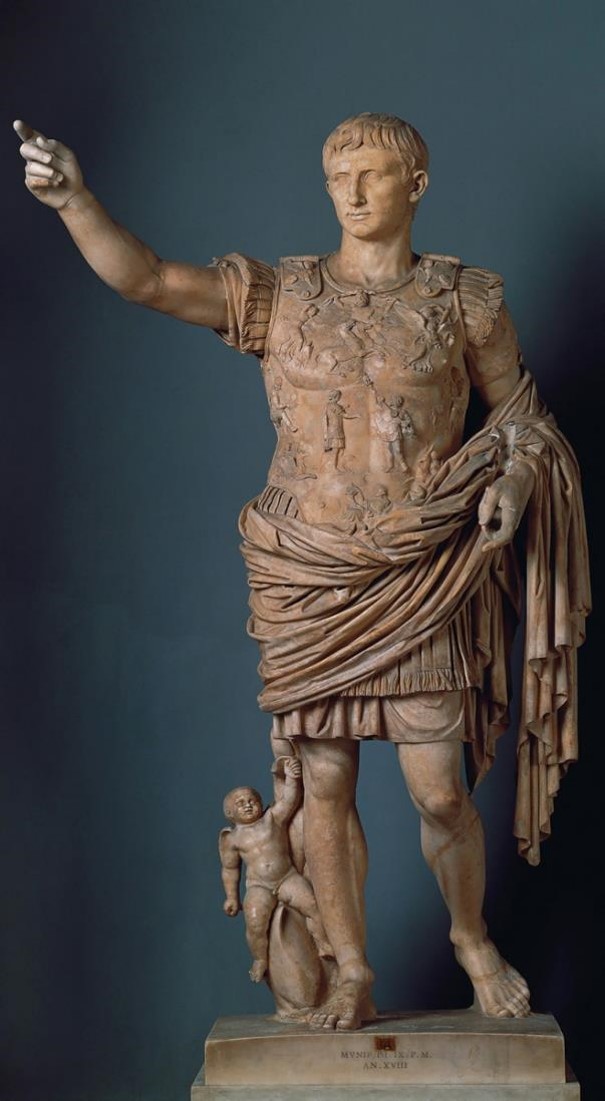
Name: Colosseum, Rome. Period: Ancient Imperial Rome, 1st century BCE-4th century CE. Location: Rome. Significance: Known as Flavian Amphitheater. Vespasian started building it and his son, Titus, finished it. It was made to show how great a ruler he was. The former site was Nero's Golden House. Nero was seen as a bad emperor because he was selfish (committed suicide). So the Colosseum was made to show that Vespasian was better than Nero. (Colosseum was made for everyone). It was made by Jewish captive labor. Design: top ->Corithian. Middle ->Ionic. Bottom ->Doric. Had Annular Tunnel Vaults (aka. passageways to seats/almost like a hallway). Interior -> sand is on the ground (bury dead stuff). Catwalk inside too. There used to be an oning (aka. "Velarium" [ceiling]) to provide shade. "Hypogeum" (aka. underground area) was almost like the "behind the stage" part. They kept animals in the Hypogeum. There was also a trapdoor to add affect (staged). Also had groin vaults.
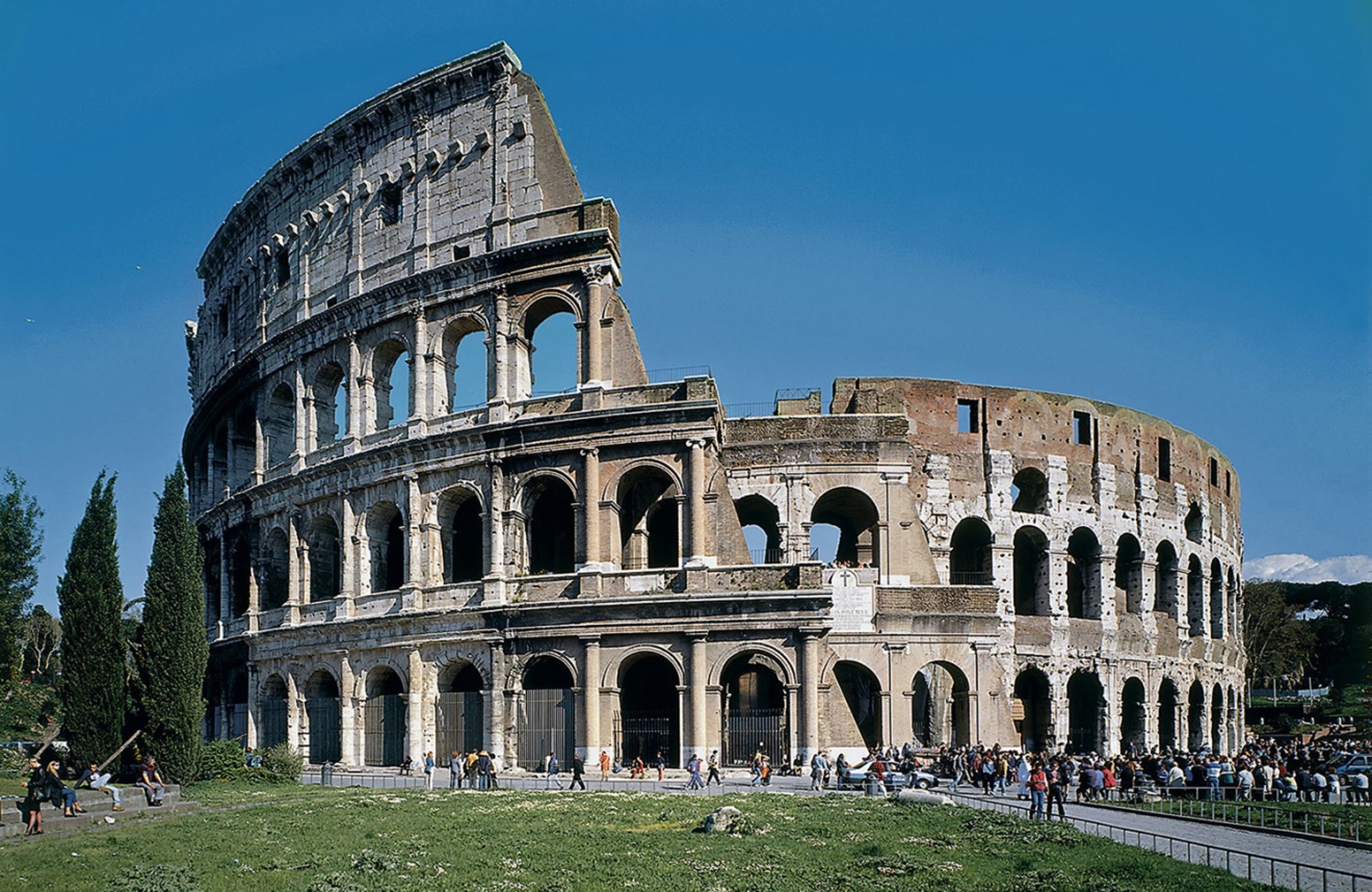
Name: Marcus Aurelius. Period: Ancient Imperial Rome, 1st century BCE-4th century CE. Significance: He was a Greek philosopher (had a beard to show he love for Greek philosophy). He wrote the "Meditations", which was very thoughtful and philosophical. He was made equestrian style (aka. on a horse) to show him even bigger (power). This statue originally showed him trampling a German "barbarian". Gesture with his hand is meant to show clemency. Material: Bronze, originally gilded.

Name: Basilica of Maxentius and Constantine, Rome. Period: Ancient Imperial Rome, 1st century BCE-4th century CE. Location: Rome. Significance: Constantine became emperor at the Battle of Milvian Bridge. He had a dream of a burning cross in the sky. When he awoke, he made his army write "Chi Rho" (aka. "Christ") on every shield and they won the battle. The Basilica was used -> as an administrative center, civic hall, and law court. It has barrel and cross vaults and coffers. It has side aisles and cleretory windows.
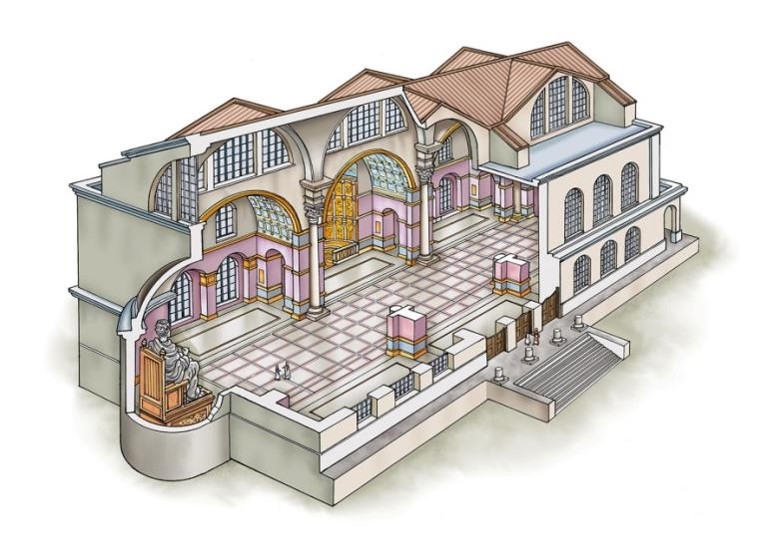
Name: Constantine the Great, from the Basilica of Maxentius and Constantine. Period: Ancient Imperial Rome, 1st century BCE-4th century CE. Location: Rome. Significance: More abstract style of the Late Empire/Early Christian. It is meant to show his power and leadership even if Constantine can't physically be there. It shows justice administered in the name of the emperor

Arch of Titus, Rome. Period: Ancient Imperial Rome, 1st century BCE-4th century CE. Location: Rome. Significance: The Arch is a "Triumphant Arch". To hold a Roman triumph is a BIG DEAL! ->parade, award, big sculpture made for them. Only done for the emperors and the emperor's sons. It was made to show triumph the Jewish Wars.
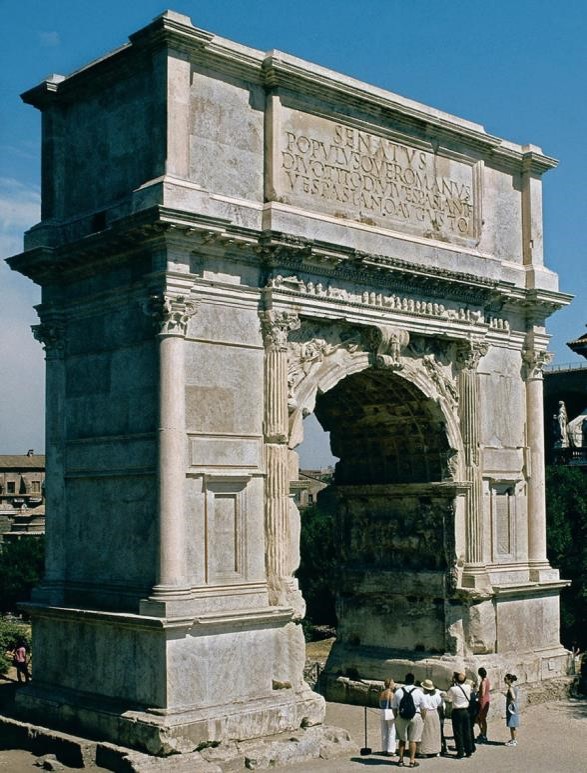
Name: "Spoils of the Temple of Solomon in Jerusalem". Period: Ancient Imperial Rome, 1st century BCE-4th century CE. Location: Arch of Titus, Rome. Significance: Shows people pillaging the Jews. Jewish temples keep getting destroyed by people. Shows people taking the Sacred Menorah. It shows the destruction of the SECOND temple of Jerusalem. Roman Triumph!

Name: Pantheon, Rome. Period: Ancient Imperial Rome, 1st century BCE-4th century CE. Location: Rome. Significance: It is a temple to honor ALL gods! (pan=all). Made by Hadrian (one of the "good emperors"). He made it in honor of Marcus Agrippa. Has Roman porch-front. Outside ->looks like lintels and posts. Inside ->there is a dome. Has coffers (aka. squares in the dome. They were made to relieve the weight of the dome. They made materials lighter as the dome got higher. Originally, there was guild on it. Has a hole in the top (aka. oculus) to connect people to the heavens. Columns ->Corinthian Order (aka. fanciest order). Has rotunda.
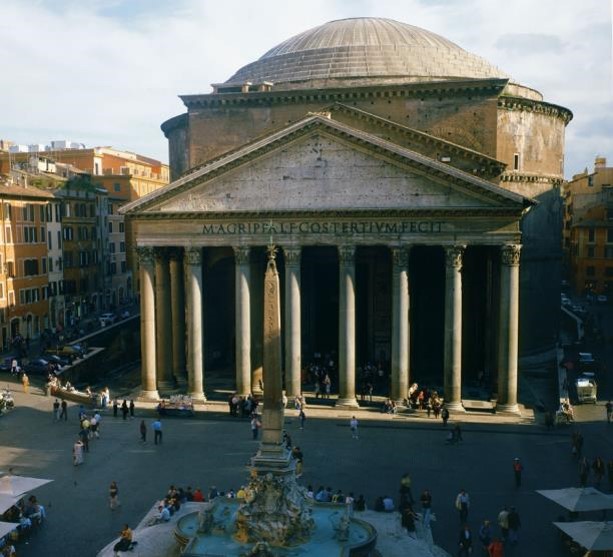
Name: Sarcophagus of Junius Bassus. Period: Early Christian, 3rd-5th centuries CE. Location: Grottos of St. Peter, Vatican, Rome. Significance: We know that Junius Bassus is a Roman prefect and former consul. Adam and Eve Scene -> using contrapposto. Nudity NOT heroic. Palm Sunday Scene -> Jesus is on a donkey. He is entering the city as a king (aka. Adventus). Jesus Enthroned in the Middle Scene -> St. Peter and St. Paul are with him. Jesus is stepping on Cuirass (the god of the cosmos) to show that Jesus is the true ruler of the cosmos. He is holding a scroll to show that He is a law maker. Made with pagan style, but in a new setting. (ex. Cherubs are around the image and grape vines are too). More geometric and abstract style (less earthly, more spiritual). Art depicting "religions of the Book".

Name: Old St. Peter's Basilica, Rome. Period: Early Christian, 3rd-5th centuries CE. Location: Rome. Significance: This church and burial grounds were donated and commissioned by Constantine. It was made as a memorial to St. Peter (aka. the first Pope). The architectural plan ->longitudinal axis, atrium/narthex, Nave, side aisles, transept, apse, clerestory, and T-shaped cross. There are no arches (comes later).

Name: The Good Sheperd mosaic, Galla Placidia, Ravenna. Period: Early Christian, 3rd-5th centuries CE. Location: Oratory of Galla Placidia, Ravenna, Italy, in the lunette over the west entrance. Significance: The mosaic is made out of tesserae (aka. tiny pieces of stone/glass). The Good Sheperd=Jesus Christ (Bible Story from the Gospel of John). He has a halo (showing divinity), a purple cloth (showing royalty), clothed in gold. He is holding a golden cross instead of a shepherd's staff. All the sheep are looking at him in admiration -> shown as a king. Material: Tesserae.
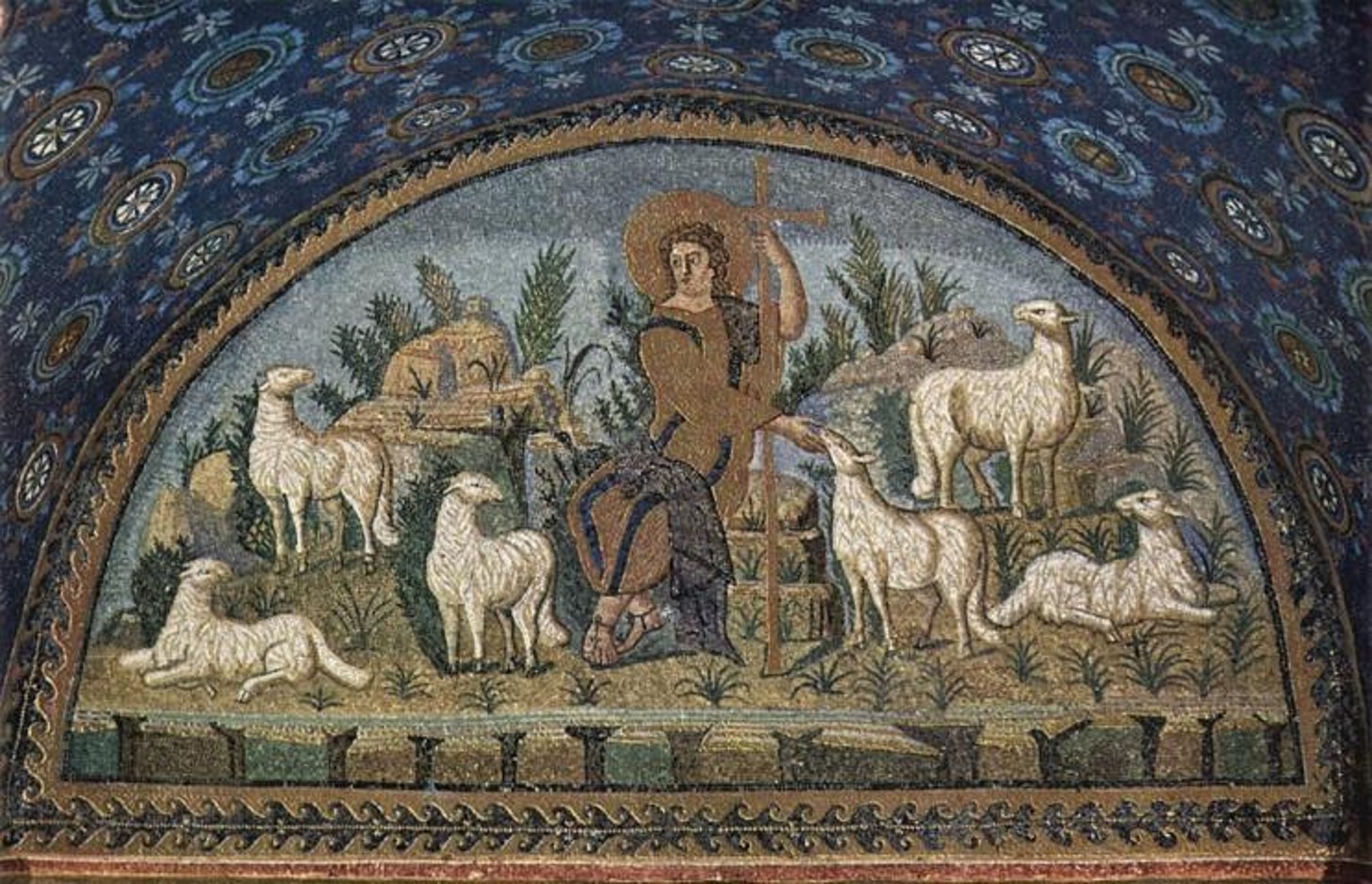
Name: Antemius of Talles and Isidorus of Miletus, Hagia Sophia, Istanbul. Period: Early Byzantine, 6th-9th centuries CE. Location: Istanbul, Turkey. Significance: The structure has a combo of longitudinal and central plans. Also had conches (aka. half-domes) and Exedra. It has a big dome, but longer. The dome is set on pendentives. A bunch of windows are in the dome ->BIG DEAL! Architecturally incredible (lets light in and makes if feel even bigger than before.) Also, it makes it look more divine. Originally, it was covered in gold, but the gold was taken down. Emperor Justinian made it to show his power.
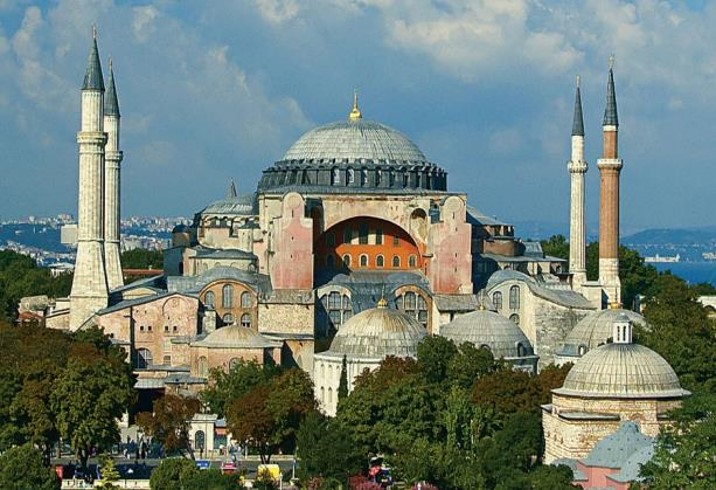
Name: Interior of the Church Hagia Sophia. Period: Early Byzantine, 6th-9th centuries CE. Location: Istanbul, Turkey. Significance: The structure has a combo of longitudinal and central plans. Also, has conches (aka. half-domes) and Exedra. The conches make the dome bigger and longer. The dome is set on pendentives. A bunch of windows are in the dome ->BIG DEAL! Architecturally incredible (lets light in and makes it feel bigger than before.) Also, it makes it look more divine. Originally, it was covered in gold, but the gold was taken down. Emperor Justinian made it to show his power.
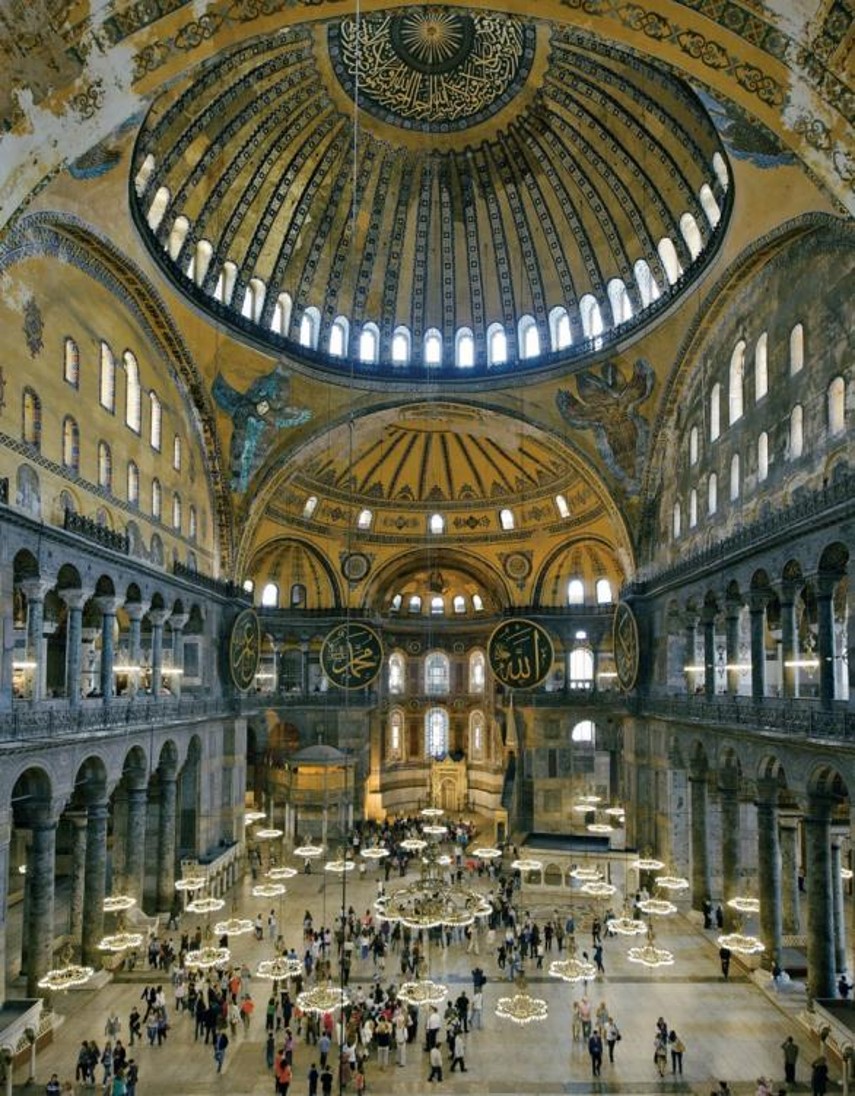
Ancient Greece, Early 5th century BCE
Archaic Period
Ancient Greece, mid to late 5th century BCE
Early to High Classical
Ancient Greece, c. 4th century BCE
Late Classical
Ancient Greece, late 4th-1st century BCE
Hellenistic
6th-1st century BCE
Ancient Republican Rome
1st century BCE-4th century CE
Ancient Imperial Rome
3rd-5th centuries CE
Early Christian
6th-9th centuries CE
Early Byzantine